Table of Contents
Ever found yourself mid-recipe, craving that creamy tang of sour cream, only to realize you're out or, worse, dealing with lactose issues? I get it! It's a kitchen conundrum many of us face. Sour cream is that secret weapon in so many dishes, from fluffy baked goods to zesty dips, and finding a suitable sour cream substitute lactose free can feel like a mission. But don't worry, this isn't some impossible culinary feat. Whether you're lactose intolerant, vegan, or just out of the usual stuff, there are fantastic alternatives. This article will guide you through the world of sour cream swaps, exploring everything from dairy-based options (if lactose isn't your only concern), to the best dairy-free picks, and even how to whip up your own lactose-free version at home. We'll break down what makes a good substitute, how to use them in baking and cooking, and address those common "will this curdle?" worries. So, get ready to discover a range of options that will keep your recipes delicious and your stomach happy!
Understanding Sour Cream and Why We Need Substitutes
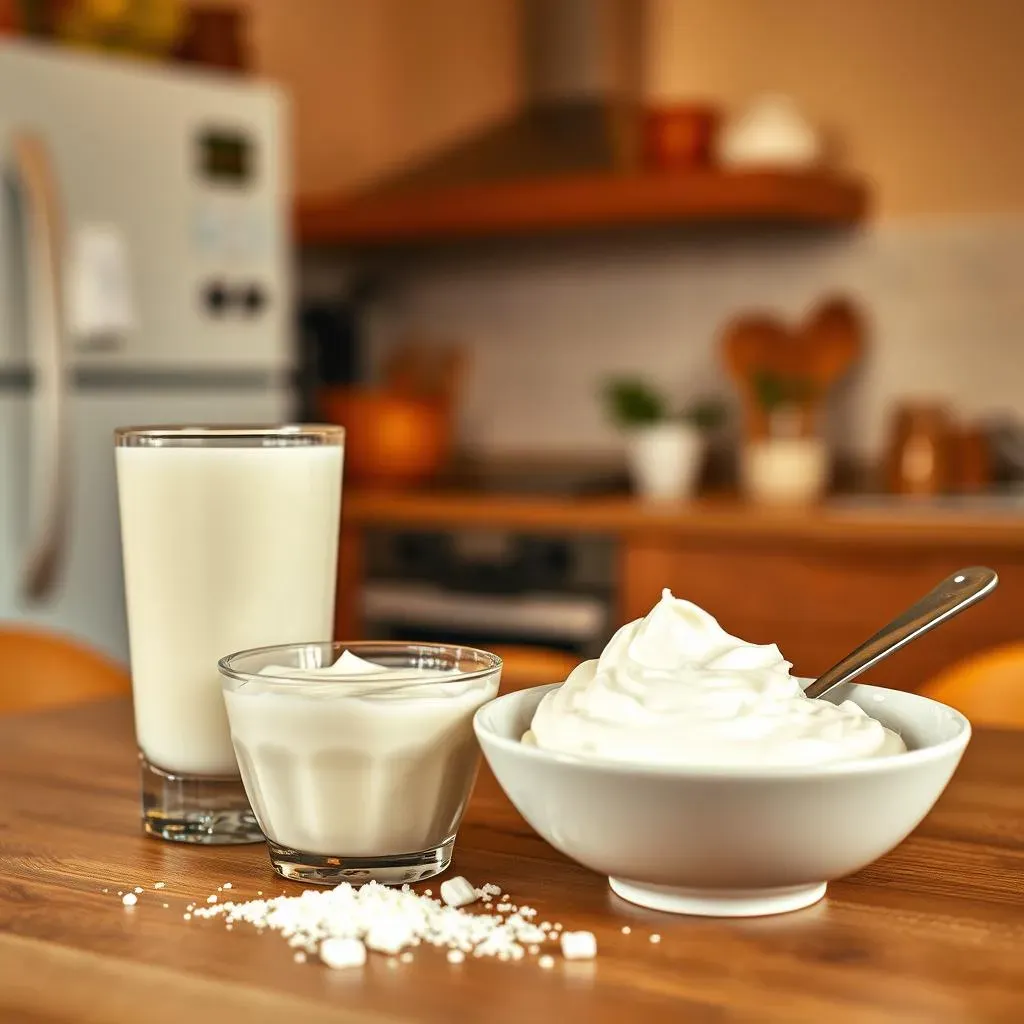
Understanding Sour Cream and Why We Need Substitutes
What Exactly is Sour Cream?
let's start with the basics. Sour cream, at its heart, is a dairy product. It's made by fermenting regular cream with lactic acid bacteria. This process gives it that signature tangy flavor and thick texture we all know. It's that creamy, slightly acidic kick that makes dishes sing. Think about it: tacos, baked potatoes, creamy dips – sour cream is a star in many of our favorite foods. But, here's the thing, it's not always an option for everyone.
For some, it's the lactose, a sugar found in dairy, that causes discomfort. Others might be vegan, avoiding all animal products. And then there are times when you're just plain out of it! Whatever the reason, knowing why we might need a substitute is just as important as knowing what it is we're replacing. That's where the fun begins, exploring a whole world of alternatives that can deliver that same creamy goodness, without the dairy baggage.
Why Look for a Substitute?
So, why bother with a sour cream substitute lactose free? Well, the most obvious reason is lactose intolerance. It's a pretty common issue, and it can lead to some not-so-fun digestive problems. Nobody wants that! Then, there's the vegan lifestyle. If you're avoiding all animal products, traditional sour cream is a no-go. But, beyond these dietary reasons, sometimes we just need a substitute because we're out of the real deal. It's happened to me countless times, and I've had to scramble for a quick fix.
And honestly, exploring substitutes can be a culinary adventure. It's a chance to discover new flavors and textures, and maybe even find a new favorite. Think of it as a fun puzzle; how can we recreate that creamy, tangy magic without the dairy? The answer, my friend, lies in a bunch of creative alternatives that we're going to look at in the next sections. So, whether it's for dietary needs or pure culinary curiosity, finding the right substitute is totally worth it.
Reason for Substitution | Explanation |
|---|---|
Lactose Intolerance | Digestive discomfort from dairy |
Vegan Lifestyle | Avoidance of all animal products |
Ingredient Availability | Simply being out of sour cream |
Culinary Exploration | Wanting to discover new flavors and textures |
DairyBased Alternatives When Lactose Isn't the Issue
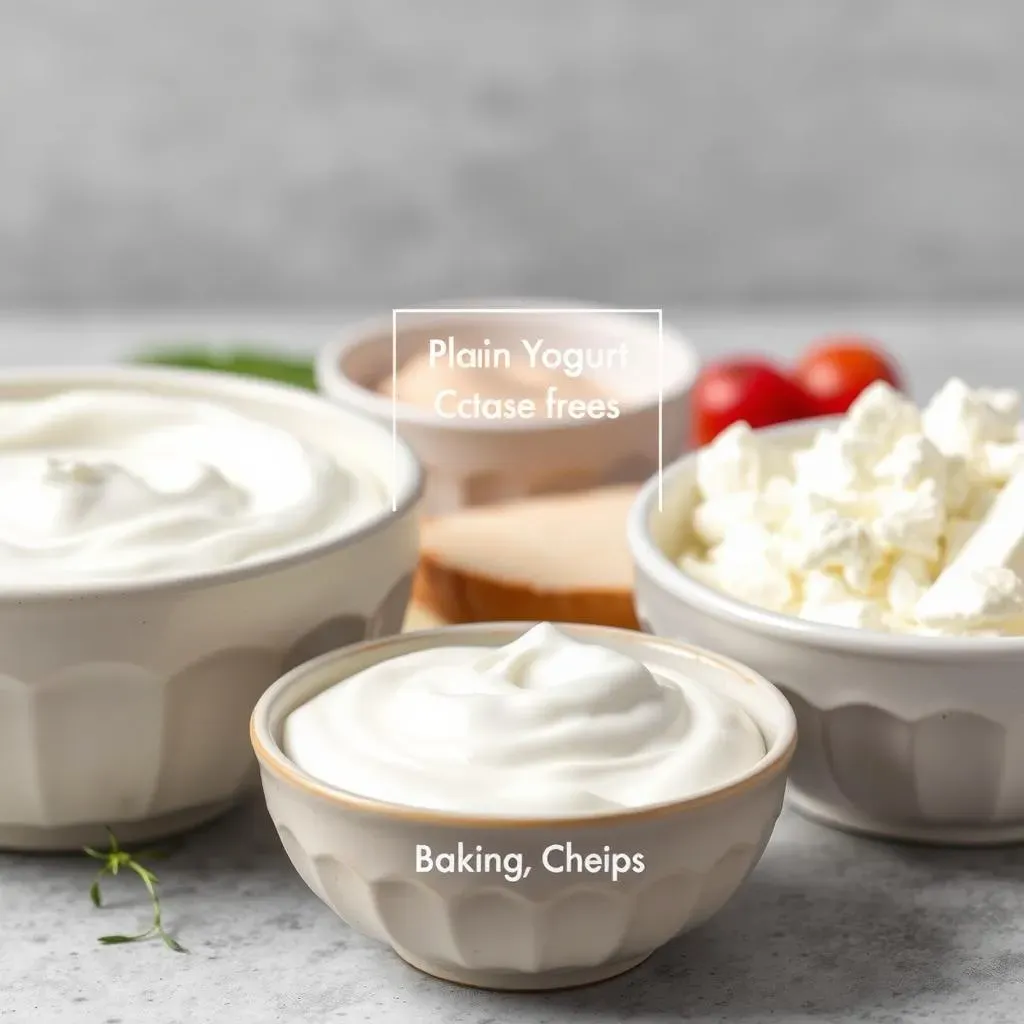
DairyBased Alternatives When Lactose Isn't the Issue
so maybe lactose isn't your enemy, but you still need a stand-in for sour cream. No problem! There's a whole squad of dairy-based alternatives ready to jump in. Think of these as cousins to sour cream, sharing some of that creamy DNA but with their own unique personalities. We're talking about things like plain yogurt, buttermilk, even cottage cheese. Each one brings something a little different to the table, and knowing their strengths will help you pick the best one for your recipe. It's all about understanding what each substitute can do and how it might change the final dish.
For instance, plain yogurt is a super versatile option, working well in both baking and dips. Buttermilk, with its slightly thinner texture, can add a lovely tang to dressings and sauces. Cottage cheese, when blended, can offer a surprisingly smooth and creamy base, perfect for dips and fillings. The key here is to not just blindly swap, but to think about how each of these dairy alternatives will impact the texture and flavor of your creation. It's like choosing the right tool for the job – each has its own best use case. And hey, maybe you'll even discover a new favorite in the process!
Dairy Substitute | Best Uses | Texture Notes | Flavor Profile |
|---|---|---|---|
Plain Yogurt | Baking, Dips, Toppings | Thick and creamy | Tangy and slightly acidic |
Buttermilk | Dressings, Sauces, Baking | Thin and pourable | Tangy and slightly sweet |
Cottage Cheese (Blended) | Dips, Fillings | Smooth and creamy | Mild and slightly salty |
LactoseFree Sour Cream Substitutes: A World Beyond Dairy
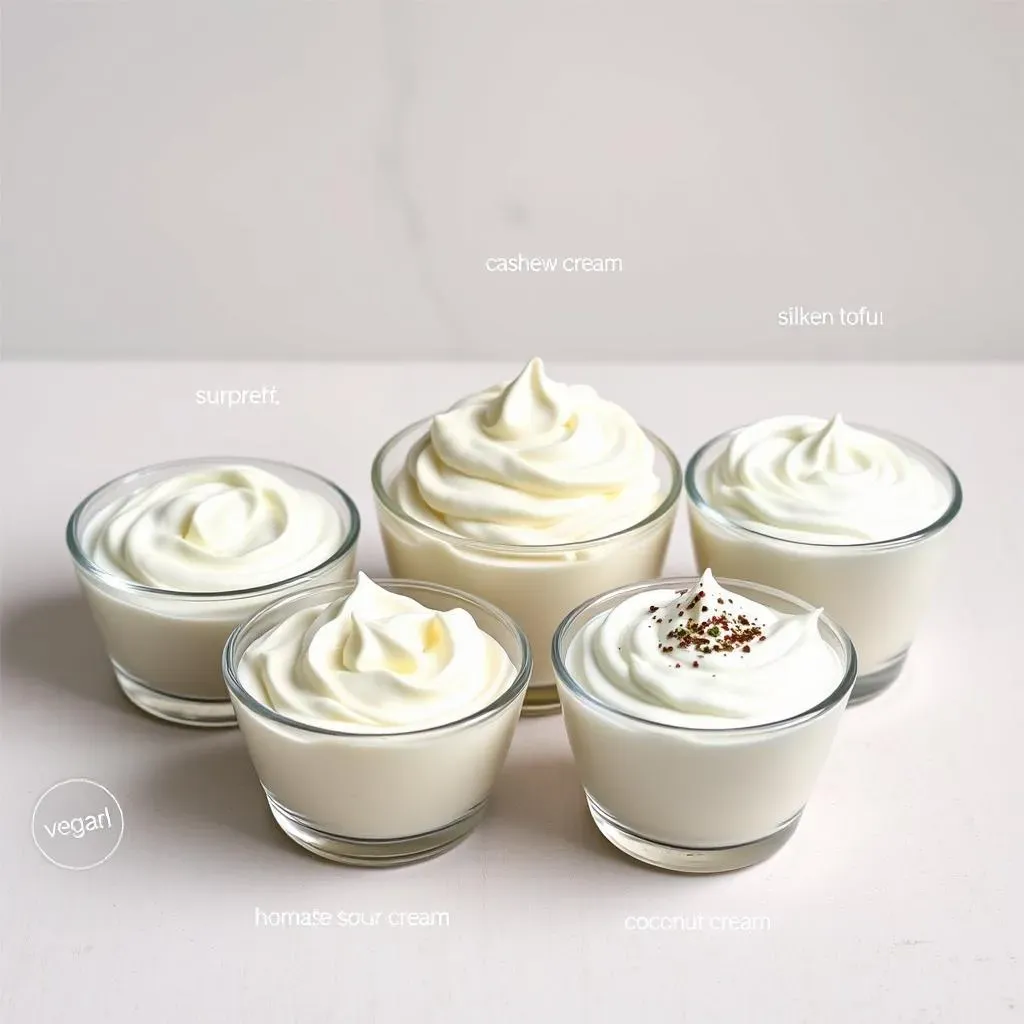
LactoseFree Sour Cream Substitutes: A World Beyond Dairy
Alright, now let's get to the good stuff: lactose-free sour cream substitutes. This is where things get really interesting. We're not just talking about swapping one dairy product for another. We're venturing into the realm of plant-based magic and clever culinary hacks. Think creamy coconut, tangy soy, and even the humble cashew, all transformed into delicious alternatives. It's like discovering a whole new pantry, full of options that are not only dairy-free but also exciting and delicious. This section is for anyone who's said "no" to dairy and is looking for that same sour cream experience, without the tummy troubles. We’re about to unleash some fantastic options that will make you forget all about the dairy version.
The beauty of these lactose-free alternatives is the variety they offer. You've got store-bought options like vegan sour cream, often made from soy or cashew bases, which are super convenient. Then, there's the DIY route, where you can play mad scientist in the kitchen, blending up your own creations. We're talking about using things like soaked cashews or even silken tofu to create a smooth, tangy base. Each option has its own unique texture and flavor, so you can find the perfect match for your specific needs. It's all about experimenting, finding what works best for you, and realizing that dairy-free doesn’t mean flavor-free. In fact, it often opens up a whole new world of deliciousness!
Lactose-Free Substitute | Base Ingredient | Texture | Flavor Notes | Availability |
|---|---|---|---|---|
Vegan Sour Cream (Store-Bought) | Soy, Cashew, or Coconut | Generally smooth and creamy | Varies, often tangy | Widely Available |
Homemade Cashew Cream | Cashews (soaked) | Rich and thick | Mildly nutty, can be customized | DIY |
Silken Tofu Blend | Silken Tofu | Smooth and light | Neutral, takes on added flavors well | DIY |
Coconut Cream | Coconut Milk | Thick and rich | Distinct coconut flavor | Widely Available |
Baking and Cooking: Choosing the Right Substitute for the Job
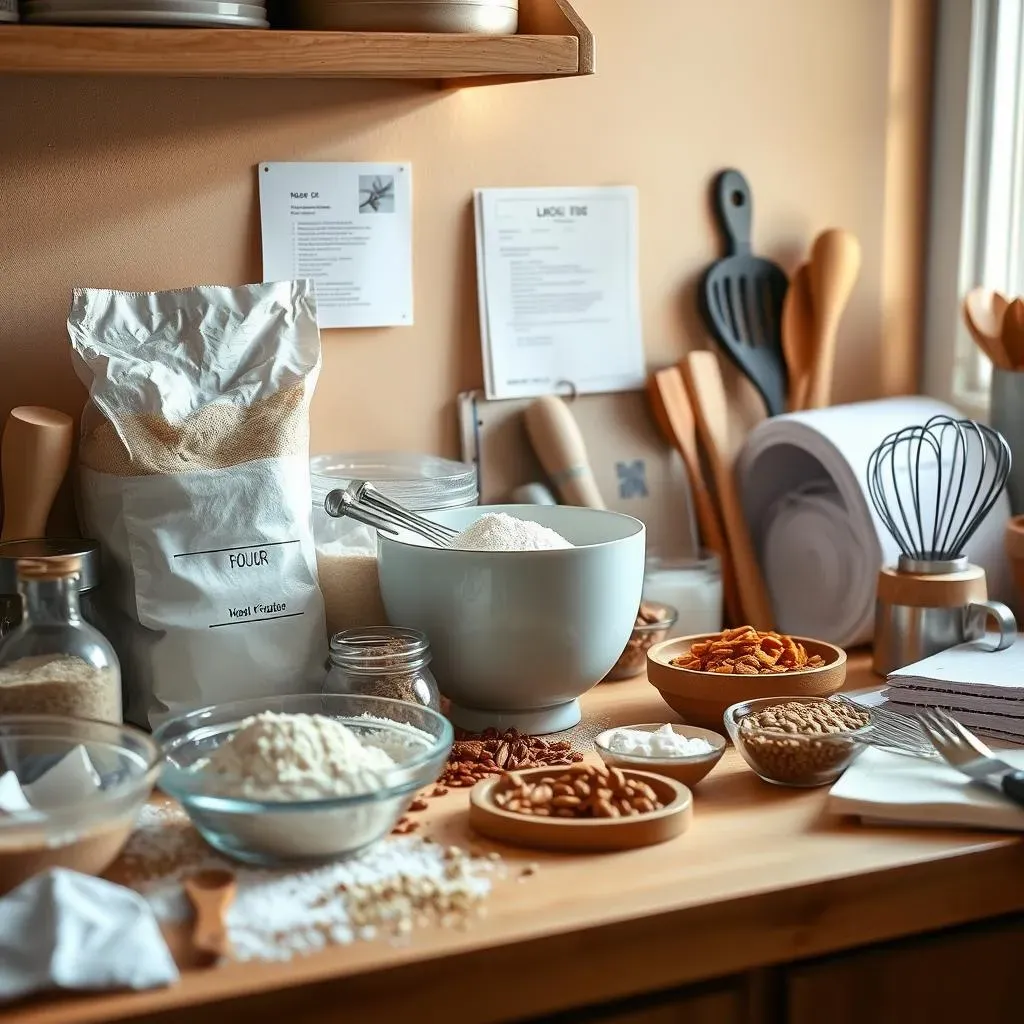
Baking and Cooking: Choosing the Right Substitute for the Job
so you've got your substitutes lined up, but here's the real test: how do they perform in the heat (literally!)? It's one thing to taste a spoonful of cashew cream, and another to bake it into a cake. The trick is to match the substitute to the recipe. Think of it like this: if you're making a light, fluffy cake, you might not want to use something super dense like coconut cream straight up. Similarly, a creamy dip needs a different texture than a baking recipe. The goal is not just to replace the sour cream, but to maintain the texture and flavor profile of the dish. And trust me, there's a bit of a learning curve but it's also a fun experiment. Let's break down how to choose the right substitute for the job, so you won't end up with a baking disaster.
For baking, you need to consider how much moisture the substitute adds, and how it will react with heat. Yogurt, for example, can curdle if it's simmered for too long. So, if you're using it in a sauce, you might want to add it at the end and gently warm it through. A good rule of thumb is to temper the substitute by adding a small amount of hot liquid before adding it to the whole mixture. This can help prevent curdling. For baking, a mixture of yogurt and a bit of baking soda can be a great option. The baking soda helps to lighten the texture and create a good rise. Then, for dips, you can be a bit more flexible. You’re just aiming for that creamy texture and tangy flavor. So, you can use a variety of dairy-free options, playing around with cashews, tofu, or store-bought vegan alternatives. It’s all about finding that sweet spot between flavor and function.
Recipe Type | Recommended Substitute | Considerations |
|---|---|---|
Cakes and Muffins | Yogurt + Baking Soda, Vegan Sour Cream | Moisture content, leavening effect |
Sauces and Gravies | Yogurt (tempered), Vegan Sour Cream | Curdling, heat stability |
Dips and Dressings | Cashew Cream, Tofu Blend, Vegan Sour Cream | Texture, flavor profile |
Remember, the best way to learn is by doing, so don't be afraid to experiment a little and see what works for you. You might even discover that you prefer a certain substitute over the real deal. The kitchen is your lab, and every recipe is a science experiment. And, just like with any science experiment, sometimes you might get a result that isn't quite what you were expecting. But that's okay. That's how you learn. So, grab your ingredients, pick your substitute, and get ready to create something delicious. And remember, if all else fails, you can always order a pizza. But I have a feeling that won't be necessary!
DIY LactoseFree Sour Cream: Recipes and Tips
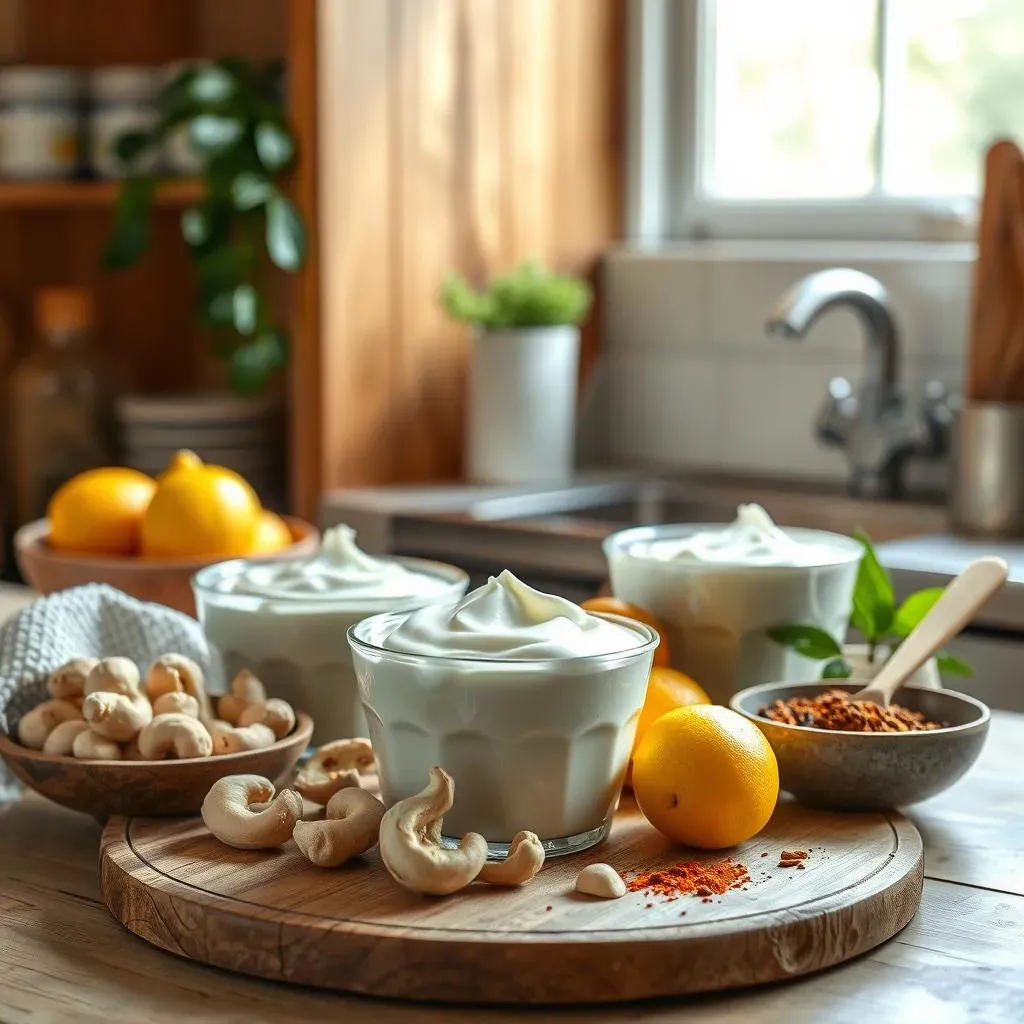
DIY LactoseFree Sour Cream: Recipes and Tips
so you're feeling adventurous, huh? You want to make your own DIY lactose-free sour cream? I love it! It's like unlocking a secret level in the kitchen. And honestly, it's way easier than you might think. The beauty of making your own is that you get to control everything – the texture, the tang, and of course, you know exactly what's going into it. No weird additives or preservatives, just pure deliciousness. We're talking about taking simple ingredients and transforming them into something that rivals the store-bought stuff. Whether you're a seasoned cook or a kitchen newbie, this is a project you can definitely tackle. I’ve spent many afternoons experimenting with different recipes, and I’m here to share what I’ve learned, so you don't have to go through the same trial and error process that I did!
The key to success here is understanding your ingredients. For example, cashews, when soaked and blended, create a naturally creamy base. And silken tofu, with its neutral flavor, is like a blank canvas, ready to take on any tang you throw at it. Then, the tangy flavor usually comes from lemon juice, apple cider vinegar, or even a bit of lactic acid (if you're feeling fancy). It's all about finding the right balance. We're going to look at a couple of basic recipes and some tips to tweak them to your preference. So, get ready to get your hands dirty, because we're about to make some kitchen magic happen! And don’t worry, if you mess up the first time, just try again! That’s the best part about DIY, you can always adjust it as you learn.
DIY Option | Base Ingredient | Tang Source | Texture Notes |
|---|---|---|---|
Cashew Cream | Soaked Cashews | Lemon Juice or Apple Cider Vinegar | Rich and Thick |
Silken Tofu Cream | Silken Tofu | Lemon Juice or Apple Cider Vinegar | Light and Smooth |
Basic Cashew Cream Recipe
Here's a super simple cashew cream recipe to get you started. You'll need one cup of raw cashews, soaked in hot water for at least 30 minutes (or overnight in cold water, if you have time). Then, drain and rinse the cashews. Toss them into a blender with about ½ cup of fresh water, 2 tablespoons of lemon juice, and a pinch of salt. Blend until completely smooth and creamy, adding more water if needed to reach your desired consistency. Taste it, and adjust the lemon juice or salt to your liking. That’s it! You’ve made your own cashew-based sour cream!
If you want a thicker consistency, use less water while blending. And for a richer taste, you can even add a tablespoon of nutritional yeast. It gives it a slight cheesy flavor, which is surprisingly good in dips. The best part about this recipe is how adaptable it is. You can play around with the ratios of lemon juice and water until you get the perfect tang and consistency. It’s all about creating a recipe that is perfect for you and your taste buds! And don’t be afraid to experiment with other flavors, like garlic or herbs. The possibilities are endless.
Basic Silken Tofu Recipe
Now, let's talk tofu. This recipe is even easier, you'll need one block of silken tofu, drained. Place it in a blender with 2 tablespoons of lemon juice, 1 tablespoon of apple cider vinegar, and a pinch of salt. Blend until completely smooth. If you want to add some thickness, you can blend in a tablespoon of cornstarch. Then, taste it, and adjust the lemon juice, vinegar, or salt to your liking. That’s all there is to it!
The silken tofu recipe is great because it’s so light and neutral, making it a fantastic base for all kinds of flavors. You can add a clove of garlic for a garlic aioli style sour cream. Or you can add some fresh dill for a nice dill dip. And unlike the cashew cream, the tofu version is lower in fat. So, it’s a great option if you’re looking to cut back on calories. Just like the cashew version, this is a great starting point. Feel free to tweak it to make it your own. And remember, the most important ingredient is your willingness to experiment and have fun!
- Soak the cashews: For a smoother texture, soak cashews in hot water for at least 30 minutes or overnight in cold water.
- Start with less liquid: Add liquid gradually to the blender to achieve your desired consistency.
- Taste and adjust: Don't be afraid to adjust the tang or salt levels to suit your taste.
- Experiment with flavors: Add herbs, garlic, or nutritional yeast for different flavor profiles.
- Use a high-speed blender: A high-speed blender will give you the smoothest texture, but any blender will do.
Finding Your Perfect Lactose-Free Sour Cream Substitute
Navigating the world of dairy-free alternatives can seem like a challenge, but when it comes to a sour cream substitute lactose free, you've got more options than you might think. From store-bought vegan versions to DIY concoctions using cashews or tofu, the key is to experiment and find what works best for your taste buds and the specific needs of your recipe. Whether you're baking a cake, whipping up a dip, or topping your tacos, a great substitute is out there. Don't be afraid to try different options, tweak them to your liking, and most importantly, enjoy the delicious results without any lactose-induced worries! Remember, the best substitute is the one that makes your food taste fantastic and fits your dietary needs.